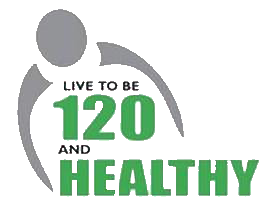The headlines grab our attention. A new #vitamin, superfood, pose, exercise equipment, or workout that promises to restore our vitality and youth. In my opinion, we’re unlikely to find a single breakthrough that will dramatically alter the odds that we live free of chronic diseases and medications and perform at our maximum.
Rather, it is a multifaceted lifestyle supported by a number of large medical studies that holds the “magic” bullet. Vitamin L, or “Lifestyle,” is the special sauce we need, and it accounts for about 80% of our health promotion.
Reviewing a few of the foundational research studies will acquaint you with best practices for a healthy life full of joy.
1. In 2001, the Harvard School of Public Health reported on a study of 84,941 healthy female nurses that were free of heart disease, cancer and diabetes.
A low-risk lifestyle was defined as a body mass index of less than 25, a diet high in fiber and polyunsaturated fat while low in trans fat and glycemic load, regular moderate to vigorous exercise (at least 30 minutes a day), no smoking, and drinking at least half an alcoholic drink daily.
During follow-up, 3,300 women were diagnosed with diabetes. The single most important predictor of this was being overweight or obese. Only 3.4% of the almost 85,000 women fit all of the low-risk lifestyle markers. These women, however, had a 91% lower chance of developing diabetes compared with the other members of the study.
2. In 2004, the INTERHEART study group evaluated the factors predicting heart attacks in 52 countries.
They reported on 15,000 cases of heart attacks and chose the same number of controls. Researchers found nine risk factors which accounted for 90% to 95% of the cases of heart attacks. Those were smoking, elevated ApoB (think bad cholesterol) to ApoA1 (think good cholesterol) ratio, high blood pressure, diabetes, abdominal obesity (waist over 35 inches for a woman and 40 inches for a man), stress, low intake of fruits and vegetables, alcohol intake and lack of physical exercise. All nine risks for heart attack can be eliminated by lifestyle.
3. In 2006, researchers analyzed data from 43,000 men in the Health Professionals Study between the ages of 40 and 75 who had no heart disease.
Low-risk men were considered to have a BMI under 25, be nonsmokers, be physically active for more than 30 minutes a day, have moderate alcohol intake and have a diet comprised of more than 40% healthy plants. Over the 16 years of follow-up, a heart attack developed in 2,183 men, some of which were fatal heart attacks. Men who had five out of five low-risk characteristics had an 87% lower rate of heart attack.
4. In 2007, Swedish investigators studied more than 24,000 women after menopause who were free of heart disease.
There were 308 cases of heart attacks over six years of follow-up. A low-risk diet (high scores for fruits and vegetable intake, whole grains, legumes, fish, moderate alcohol intake), along with not smoking, walking or biking 40 minutes daily and maintaining a trim waist-to-hip ratio reduced the risk of heart attacks by 92%.
5. In 2008, Harvard scientists reported on more than 43,000 men, again from the Health Professionals study, and more than 71,000 women from the Nurses’ Health Study.
The risk of stroke was assessed and evaluated in terms of lifestyle habits in persons with no history of stroke. Stroke risk was reduced 50% by not smoking, having a body mass index of under 25, exercising 30 minutes a day of moderate activity, having a modest alcohol intake and eating a diet in the top 40% of fruits, vegetables and whole grains.
6. In 2013, researchers in the Netherlands studied almost 18,000 men and women without heart disease.
They followed them for up to 14 years, and in that time more than 600 of the group had heart attacks, including fatal ones. They found that if people followed four steps they were able to lower their risk of heart attacks by 67%: averaging 30 minutes a day of physical activity, eating a healthy diet in the Mediterranean style rich in fruits, vegetables and whole grains, not smoking, and enjoying more than one alcoholic beverage a month. People who added a fifth health habit — sleeping seven or more hours at night on average — lowered their risk of heart attacks by 83%.
7. In 2014, scientists in Sweden examined more than 20,000 men free of heart issues and followed them for 11 years.
They found that there were certain habits that lowered the risk of heart attacks, including: a diet rich in fruits, vegetables, legumes, nuts, whole grains and reduced fat, not smoking, moderate alcohol consumption daily, thin waistlines, more than 40 minutes of daily physical activity. Men who followed all five of these lifestyle habits had an 86% lower chance of developing or dying of heart attacks than those who followed none. Only 1% of the Swedes studied followed all five habits.
As a university-certified anti-#aging cardiologist, a rather small group worldwide, I’m tracking trends in research on aging and strategies to slow or even reverse damage done to our cells, our mitochondria and our DNA. I’m optimistic that we are going to see some important advances in this field which is attracting major investments by such prominent futurists as Craig Venter and Peter Diamandis. For now, the backbone of all strategies to preserve health and vitality are six or seven daily habits that run as a common thread through the studies above.
We can #prevent or reverse the vast majority of strokes, diabetes, heart attacks, and now Alzheimer’s with lifestyle medicine, and it’s so simple and available to everyone.
Photo Credit: Getty Images

Dr. Kahn is a Clinical Professor of Medicine at Wayne State University School of Medicine and Director of Cardiac Wellness, Michigan Healthcare Professionals PC. He is a graduate Summa Cum Laude of the University of Michigan School of Medicine. He lectures widely on the cardiac benefits of vegan nutrition and mind body practices. He also writes for Readers Digest Magazine as the Holistic Heart Doc and his first book, The Whole Heart Solution, is available for sale now.



